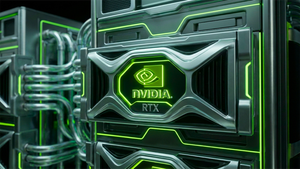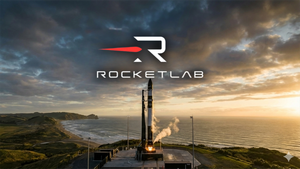
2025 is marking a pivotal shift in the technology landscape, as the sector's performance begins to broaden significantly beyond the concentrated gains of the "Magnificent 7" mega-cap stocks – Apple (NASDAQ: AAPL), Microsoft (NASDAQ: MSFT), Alphabet (NASDAQ: GOOGL), Amazon (NASDAQ: AMZN), Nvidia (NASDAQ: NVDA), Meta Platforms (NASDAQ: META), and Tesla (NASDAQ: TSLA). While these tech titans continue to wield considerable influence, a more diversified growth pattern is emerging, driven by the maturation of AI, a rebound in non-AI hardware, and macroeconomic tailwinds. This rebalancing act signals a healthier, more robust expansion for the broader technology industry, offering new avenues for investors and innovators alike.
The immediate implication of this broadening performance is a renewed focus on diversification within investment portfolios. The monolithic influence of the Magnificent 7 is giving way to a more varied individual performance among the group, reducing concentration risk. This shift is redirecting investor attention and capital towards overlooked value stocks, small-to-mid-cap technology companies, and emerging growth opportunities across various sub-sectors, promising a more distributed contribution to the market's overall leadership in 2025.
A New Era of Tech Dominance: Data Centers, Digital Assets, and Quantum Leaps
The current diversification within the tech sector is not merely a cyclical phenomenon but a profound structural shift fueled by insatiable demand for next-generation infrastructure, the maturation of digital finance, and breakthroughs in cutting-edge computing. These three pillars – data centers, institutional adoption of digital assets, and advancements in quantum computing – are emerging as the new frontiers of growth, redefining the technological landscape and offering substantial market opportunities.
Data centers, the silent workhorses of the digital economy, are undergoing an unprecedented expansion, projected to reach approximately $527.46 billion in 2025. This explosive growth is driven by the demands of Artificial Intelligence (AI) and cloud computing, with AI workloads pushing power densities to extreme levels, often exceeding 125 kW per rack. Hyperscale and colocation facilities are rapidly expanding, necessitating innovative cooling solutions like direct-to-chip (DLC) liquid cooling and even immersion cooling, alongside a pressing need for sustainable power generation. Companies like Equinix (NASDAQ: EQIX) and Digital Realty Trust (NYSE: DLR) are at the forefront, upgrading their infrastructure to support these intensive demands. This sector is not just about real estate; it's the foundational utility for all digital transformation, crucial for supporting AI, IoT, and cloud services, making it indispensable for economic growth and national security.
Concurrently, 2025 marks a significant acceleration in the institutional adoption of digital assets, with Bitcoin leading the charge. Regulatory clarity, particularly with the European Union's Markets in Crypto-Assets Regulation (MiCAR) and key U.S. executive orders, has fostered confidence. The success of U.S. spot Bitcoin ETFs, amassing over $134 billion in AUM by mid-2025 with significant institutional holdings, underscores this trend. Institutions are increasingly viewing digital assets as a tool for portfolio diversification, a hedge against inflation, and a source of potential high returns. This influx of institutional capital, supported by robust infrastructure providers like Fireblocks and innovators in tokenized assets such as Securitize, is legitimizing digital assets, enhancing market liquidity, and positioning Bitcoin as a strategic reserve asset.
Perhaps the most revolutionary, albeit nascent, area of growth is quantum computing. 2025 has been designated the International Year of Quantum Science and Technology, signaling its transition from theoretical research to practical applications. A significant breakthrough comes from Google's "Willow" chip, a 105-qubit superconducting quantum processor announced in December 2024. Willow demonstrates "below threshold quantum error correction," a critical step toward fault-tolerant quantum computers, and completed a benchmark task in mere minutes that would take today's fastest supercomputers millennia. This advancement, alongside efforts to scale qubits and develop hybrid quantum-classical systems, positions quantum computing to revolutionize drug discovery, materials science, finance, and cybersecurity, with the quantum technology market projected to reach up to $97 billion worldwide by 2035.
Reshuffling the Deck: Winners and Potential Lagards in the New Tech Paradigm
The broadening tech landscape in 2025 is creating a clear delineation between companies poised for significant gains and those that may struggle to adapt to the new growth drivers. The strategic imperative is clear: embrace AI, build robust data center infrastructure, navigate the evolving digital asset space, and make tangible progress in quantum computing.
In the data center arena, NVIDIA (NASDAQ: NVDA) continues its reign as a primary beneficiary due to its dominance in GPU hardware, essential for AI workloads. Its data center segment is a major revenue driver, and continuous innovation with next-generation GPU clusters like Blackwell solidifies its position. Hyperscale cloud providers like Microsoft (NASDAQ: MSFT) (Azure) and Amazon (NASDAQ: AMZN) (AWS) are investing tens of billions in AI and data center infrastructure, deploying custom chips and advanced cooling solutions, securing their spots as significant winners. Component suppliers such as Dell Technologies (NYSE: DELL), Broadcom (NASDAQ: AVGO), and Micron Technology (NASDAQ: MU) are also well-positioned to capitalize on the demand for high-performance hardware. Conversely, traditional data center operators failing to adapt to the extreme power densities and liquid cooling requirements of AI, or those reliant on older, less efficient infrastructure, face the risk of obsolescence.
The digital asset space is seeing a surge in institutional-focused winners. Companies like Securitize, a leader in tokenizing real-world assets through partnerships like BlackRock's BUIDL, and Fireblocks, a prominent crypto infrastructure provider offering state-regulated custody and AI-driven trading optimization, are key enablers of institutional adoption. Traditional financial institutions that are actively integrating blockchain, such as Citi (NYSE: C), BlackRock (NYSE: BLK), and Franklin Templeton (NYSE: BEN), are also poised to benefit by launching tokenized funds and developing internal digital asset platforms. On the other hand, cryptocurrency mining companies like Riot Platforms (NASDAQ: RIOT) and Core Scientific (NASDAQ: CORZ), heavily exposed to crypto price volatility and rising energy costs, may face challenges unless they diversify, as some are doing by adapting infrastructure for AI GPU clusters. Companies unprepared for evolving regulatory changes in the digital asset market could also lag.
In quantum computing, IBM (NYSE: IBM) remains a pioneer, continuously developing advanced quantum systems and aiming for a dedicated quantum supercomputer by late 2025, with a clear roadmap for error-corrected systems. Alphabet (NASDAQ: GOOGL), through its Google Quantum AI unit, is a leader, with the "Willow" processor showcasing significant advancements in error reduction and computational speed. Pure-play quantum companies like IonQ (NYSE: IONQ), specializing in trapped-ion technology and accessible via major cloud platforms, are also strong contenders with aggressive qubit scaling roadmaps. Honeywell International Inc. (NASDAQ: HON), via Quantinuum, is making strategic moves in quantum error correction and enterprise software. However, pure-play quantum startups with limited funding, unclear commercial roadmaps, or those unable to demonstrate practical applications and achieve quantum advantage sooner, such as D-Wave Quantum (NYSE: QBTS) and Rigetti Computing (NASDAQ: RGTI), may struggle to secure necessary funding and investor confidence given the capital-intensive nature and early stage of the industry.
The Broadening Ripple: Industry Shifts and Regulatory Crosscurrents
The diversification of tech growth beyond the "Magnificent 7" signifies a profound rebalancing of industry dynamics, casting ripple effects across competitors, partners, and regulatory landscapes, while echoing historical market shifts. For years, the immense market capitalization and innovation capabilities of a few tech giants have concentrated influence, capital, and talent, potentially stifling broader innovation and making it challenging for smaller firms to compete.
A more diversified growth trajectory indicates a healthier, less concentrated economic expansion. This shift fosters increased competition, which generally benefits consumers through better products and services. Smaller competitors and startups may find capital more accessible, leading to a more dynamic marketplace. For partners, particularly those reliant on the ecosystems of the Magnificent 7, this diversification could lead to new strategic alliances as businesses combine resources to navigate broader, more varied markets. However, companies that fail to integrate AI or adapt to new technological paradigms might find their offerings obsolete, highlighting a strategic imperative for rapid adaptation and niche identification. A slowdown in capital expenditure from any of the mega-cap cloud providers, for instance, could also indirectly impact their hardware suppliers or data center service partners.
Regulatory bodies worldwide have already cast a scrutinizing eye on the market concentration of the Magnificent 7, citing concerns over market power, data control, and potential anti-competitive practices. While a diversified tech sector might alleviate some of these antitrust pressures by diffusing market power, the tech industry as a whole will continue to face intensifying scrutiny across areas like data usage, consumer privacy, content moderation, and the ethical deployment of AI. Regulations like the EU's MiCAR for digital assets demonstrate a proactive approach to establishing frameworks for emerging technologies. Policymakers are broadening their focus beyond just privacy and competition to areas such as the protection of minors and the oversight of tech companies' payment activities. Well-designed regulation is crucial for fostering fair competition, ensuring ethical technology use, and promoting sustainable growth.
Historically, periods of extreme market concentration have often been followed by diversification or significant market corrections. The "Nifty 50" stocks of the 1960s and 70s, much like today's Magnificent 7, experienced a period of significant outperformance before a broader market catch-up. Similarly, the dot-com bubble of the late 1990s demonstrated the risks of speculative valuations concentrated in a narrow group of tech companies. These historical precedents suggest that while market leadership can become highly concentrated, economic forces, evolving investor sentiment, and competitive pressures inevitably lead to a rebalancing and a diversification of growth across a wider array of companies and sectors over time.
The Road Ahead: Navigating the Evolving Tech Frontier
The broadening performance of the tech sector sets the stage for a dynamic future, marked by both continued innovation and a re-evaluation of investment strategies. Both short-term opportunities and long-term transformations are on the horizon, demanding strategic agility from companies and discerning analysis from investors.
In the short-term (2025), the tech sector anticipates robust growth, fueled by increasing IT spending and substantial investments in AI and cybersecurity. Global IT spending is projected to grow by 9.3%, with data center and software segments leading with double-digit growth. The semiconductor industry expects a double-digit revenue surge, primarily driven by AI chips. Generative AI is transitioning from pilot projects to full-scale production, fundamentally altering business operations and product development, though it also introduces new cybersecurity vulnerabilities that require urgent attention. For the long-term, AI, software development, and cloud/edge computing are poised for sustained high growth through 2030, offering consistent returns. Quantum computing, while still nascent, holds revolutionary potential across various industries, complementing traditional computing rather than replacing it. Advancements in biotechnology, IoT, and blockchain will further contribute to technological diversification and resilience.
Companies are implementing significant strategic shifts. This includes diversification beyond core markets into high-growth areas like space technology and venture capital, and a pervasive AI-centric strategy to embed AI across ecosystems and monetize it, particularly through cloud services. Supply chain diversification and resilience are becoming paramount due to geopolitical dynamics, with companies expanding manufacturing to regions like India and Vietnam. Integrating sustainability into operations, from eco-friendly devices to optimized energy usage in cloud computing, is also a growing imperative. Companies like Microsoft (NASDAQ: MSFT) demonstrate how balancing multiple revenue streams across cloud, productivity, and AI can lead to sustained growth and stability, offering a blueprint for long-term resilience.
For investors, the evolving landscape presents several scenarios. The tech sector is expected to maintain its leadership, primarily driven by AI, emphasizing continued investment in AI, software, semiconductors, and power generation. However, diversification beyond a few tech giants becomes crucial for managing risk and capturing broader growth, encompassing value, small-cap stocks, and international equities. A focus on foundational infrastructure for AI development, such as semiconductor manufacturers and cloud providers, will continue to yield strong returns. Increased market volatility demands discerning investment, prioritizing companies with robust balance sheets, diversified revenues, and clear pathways to profitability. Opportunities may also arise in undervalued AI-driven sectors like healthcare and industrials. Investors must remain mindful of the risks of concentration and the importance of a long-term perspective, using downturns as buying opportunities in fundamentally strong companies.
Conclusion: A New Chapter of Balanced Innovation
The narrative of the tech sector in 2025 is shifting decisively from a concentrated saga dominated by a few "Magnificent 7" giants to a more expansive, diversified epic. This transformation underscores a maturing industry that is not only sustaining its innovative zeal but also spreading its benefits and opportunities across a broader ecosystem. The foundational pillars of this new growth – the relentless expansion of AI-driven data centers, the accelerating institutional embrace of digital assets like Bitcoin, and the groundbreaking advancements in quantum computing exemplified by Google's "Willow" chip – signify a profound re-engineering of the global technological and financial landscape.
Key takeaways from this evolution highlight that AI remains the primary catalyst, driving exponential growth across hardware, software, and cloud computing. The sustained demand for robust cybersecurity and data privacy solutions further solidifies the sector's critical role. Moreover, global expansion and diversification beyond traditional markets are proving to be crucial strategies for scalable and resilient growth. While the Magnificent 7 have undeniably paved the way, their individual performances are diverging, making selective investment more vital than ever.
The market's trajectory points towards continued strong tech growth in 2025, but with a crucial difference: a broadening of earnings beyond a select few. This shift suggests a healthier market, less susceptible to concentrated risks, and offering new avenues for robust economic expansion. Elevated valuations in certain tech segments, however, necessitate a discerning and selective investment approach, favoring quality companies with durable themes over speculative bets.
The lasting impact of this diversification will be profound, fostering enhanced resilience across the industry and driving a new era of economic transformation. It signifies a paradigm shift in investment, moving away from an over-reliance on a handful of tech behemoths towards a more balanced and sustainable growth model. This dynamic and diversified market is a testament to the ongoing evolution and adaptability of the global economy.
In the coming months, investors should vigilantly watch for continued market broadening beyond the Magnificent 7, seeking diversified exposure across various tech sub-sectors—cloud, AI applications, fintech, semiconductors, and cybersecurity. A balanced approach that considers valuations and focuses on companies with clear AI monetization strategies, robust balance sheets, and diversified revenue streams will be paramount. Geopolitical developments, regulatory shifts, and macroeconomic factors, including interest rates and inflation, will continue to influence market performance and global expansion strategies. Ultimately, embracing diversification and focusing on fundamental strength will be key to navigating this exciting new chapter in the tech sector.




